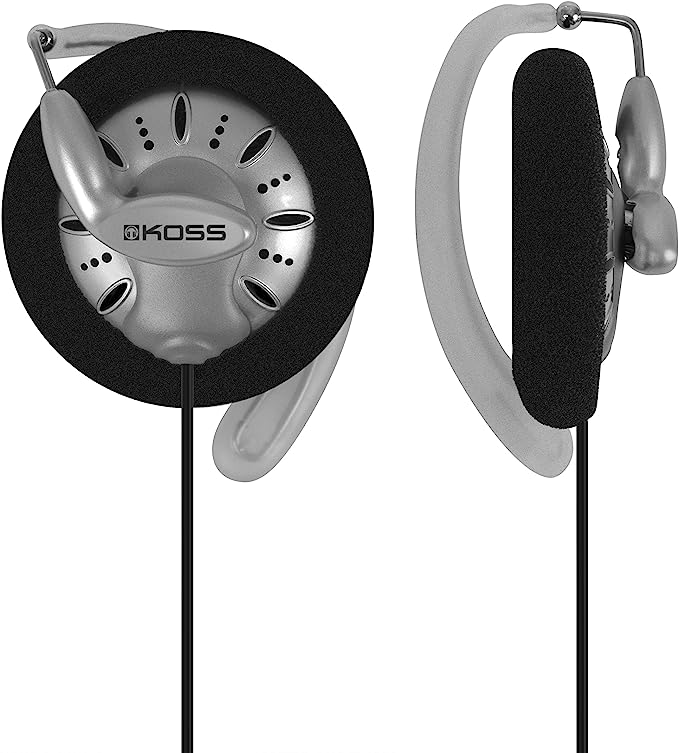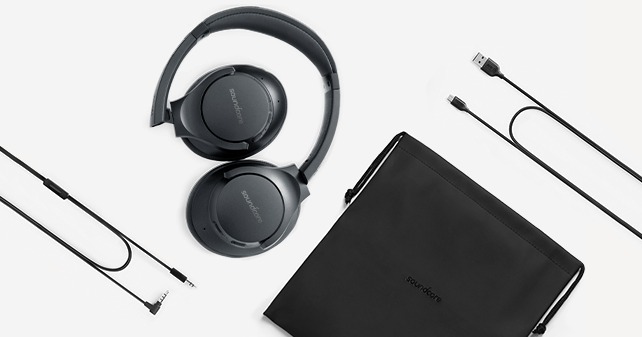Koss KTXPRO1 Headphones: Unpacking the Science of Affordable High-Fidelity Sound
Update on April 13, 2025, 1:16 p.m.
In the vast ocean of audio gear, the quest for genuinely satisfying sound often feels tethered to a hefty price tag. We scroll through endless options, balancing features, reviews, and, inevitably, the impact on our wallets. Yet, sometimes, a product emerges from the budget-friendly shallows that punches well above its weight, earning nods of approval from casual listeners and discerning audiophiles alike. The Koss KTXPRO1 Titanium Portable Headphones, often found hovering around the astonishingly accessible $20 mark, is one such contender. But how does a headphone this inexpensive manage to deliver what many describe as a genuinely pleasurable listening experience? The secret isn’t magic, but rather a thoughtful application of fundamental audio science and design choices worth exploring.

A Legacy of Listening: The Koss Connection
Before diving into the nuts and bolts of the KTXPRO1, it’s worth taking a brief step back. The name Koss carries a significant weight in the history of personal audio. It was John C. Koss, back in 1958, who invented the world’s first SP/3 stereophone, effectively changing how individuals experienced music. His goal, as the story goes, was to replicate the immersive excitement of a live musical performance, bringing listeners closer to the music they loved. This dedication to accuracy and an engaging sound experience became known as “The Sound of Koss.” While the KTXPRO1 sits at the entry-level end of their lineup, understanding this heritage provides context. It suggests that even in their most affordable offerings, there might be an underlying philosophy focused on delivering clear, engaging sound, achieved through smart engineering rather than expensive frills.
Decoding the Sonic Signature: The Language of Frequency (15Hz-25kHz)
One of the first specifications you’ll encounter for the KTXPRO1 is its frequency response, listed as 15 Hz to 25,000 Hz (or 15-25 kHz). What does this cryptic range actually tell us about the sound? Think of frequency response like the range of notes a musical instrument, say a grand piano, can produce – from the deepest, rumbling lows to the highest, shimmering highs. Frequency is measured in Hertz (Hz), with lower numbers representing bass frequencies and higher numbers representing treble frequencies.
Human hearing, generally speaking, spans from about 20 Hz to 20,000 Hz, though this range can shrink, especially at the higher end, as we age. The KTXPRO1’s claimed ability to reach down to 15 Hz suggests a potential to reproduce very deep bass notes – the kind you might feel as much as hear, like the resonant throb of a pipe organ or the deep pulse of electronic music. This capability could contribute to the “warm, rich bass tones” mentioned in descriptions.
At the other end, extending up to 25,000 Hz pushes slightly beyond the typical limit of human perception. While we might not consciously hear frequencies that high, a driver capable of reproducing them might handle the complex harmonics and overtones within the audible range (up to 20 kHz) with greater ease and less distortion. Think of it like an engine that can comfortably rev higher than needed – it operates more smoothly within its normal working range. This could translate to the “crisp highs” and overall “clear and balanced sound” that users report, allowing delicate details like cymbal decays or the subtle breathiness in a vocal performance to come through cleanly. It’s important to remember, however, that a wide frequency range on paper doesn’t automatically guarantee perfect sound quality across that range; it merely indicates the theoretical limits of the hardware.

The Engine Room: Titanium’s Touch and Magnetic Muscle
Delving deeper, we find mention of “Dynamic Titanium coated drives” or a “Titanium layered diaphragm,” paired with “Neodymium iron boron magnets.” This isn’t just a fancy label; the materials chosen for a headphone’s driver – the tiny speaker responsible for creating sound – are critical.
Imagine the diaphragm as the surface of a drum. To produce sound accurately, it needs to vibrate incredibly quickly and precisely, mirroring the electrical audio signal it receives. The ideal diaphragm material possesses two key qualities: it needs to be extremely lightweight to respond instantly to changes in the signal (this affects transient response – the ability to handle sharp, sudden sounds like drum hits), and it needs to be very rigid to resist flexing or deforming during vibrations. If the diaphragm bends or “breaks up,” it introduces distortion, muddying the sound.
This is where Titanium comes in. Titanium is known for its excellent stiffness-to-weight ratio. While the KTXPRO1 uses a “coated” or “layered” approach (the specifics of which aren’t detailed in the provided information, so it’s likely not a solid Titanium foil), the intention is likely to leverage Titanium’s rigidity. By adding a thin, stiff layer of Titanium to a base diaphragm material, the goal is to increase its overall stiffness without adding significant weight. This helps the diaphragm move more like a perfect piston, especially at higher frequencies, potentially leading to “accurate sound reproduction” with greater clarity and reduced harshness – aligning with descriptions of “clean treble free of sharp-sounding highs” and a “robust mid-range capable of heavy crunchiness.”
Complementing the diaphragm are Neodymium magnets. Neodymium is a powerful rare-earth magnetic material. Using strong magnets allows for a more potent magnetic field within the driver’s voice coil gap. This translates to greater efficiency (more sound output for the same amount of power) and better control over the diaphragm’s movement, contributing to tighter bass and overall clearer sound reproduction. It’s a common choice in modern headphones for good reason.
Breathing Room: The Airy Advantage of Open-Back Design
Perhaps one of the most defining characteristics of the KTXPRO1 mentioned is its “semi-open-back” or “open-air” design. Unlike typical closed-back headphones that create a seal around your ears (think noise-canceling cans or studio monitor headphones), open-back designs intentionally allow air – and sound – to pass through the earcups.
Picture the difference between listening to music in a small, sealed closet versus listening in a larger, open room. Closed-back headphones can sometimes feel like that closet – the sound is direct, intimate, and isolated, but can occasionally feel congested or “stuck inside your head.” Open-back headphones, like the KTXPRO1, are more akin to the open room. By letting sound waves escape outwards and allowing ambient sound to subtly filter in, they often create a more natural, spacious, and “out-of-head” listening experience. This perception of space and instrument placement is known as the soundstage.
The KTXPRO1’s open design is likely a key contributor to its described “expansive listening experience” and the feeling of being closer to a “live musical performance.” It allows the sound to “breathe,” reducing the build-up of acoustic pressure inside the earcup, which can also contribute to less listening fatigue over longer periods. However, this openness comes with inherent trade-offs. Firstly, they offer minimal noise isolation. You’ll hear your surroundings quite clearly, making them less ideal for noisy environments like commutes or busy offices. Secondly, they leak sound outwards. People nearby will likely be able to hear what you’re listening to, especially at moderate to high volumes. As one reviewer insightfully noted, this can be a benefit for shared listening experiences (like watching a movie together and being able to comment), but a drawback in quiet public spaces. It’s a fundamental aspect of the design choice.
Powering Up: The 60-Ohm Question - Friend or Foe?
The electrical specification listed is an impedance of 60 Ohms (Ω). Impedance, in simple terms, is a measure of how much resistance the headphones present to the electrical signal from your audio device (phone, laptop, amplifier). It influences how much power is needed to drive the headphones to a satisfactory volume level.
Headphone impedance varies widely, from as low as 16 Ohms to as high as 600 Ohms or more. Where does the KTXPRO1’s 60 Ohms fit in? It falls into the low-to-moderate range. This is generally good news for portability. Headphones with very high impedance often require a dedicated headphone amplifier to sound their best, as the output from a typical smartphone or laptop might not be powerful enough. Conversely, very low impedance headphones are extremely easy to drive loud but can sometimes be more sensitive to the output quality (noise floor) of the source device.
A 60-Ohm rating strikes a nice balance. It’s typically efficient enough to be driven adequately by most common portable devices – the product description explicitly mentions compatibility with “Cellphones” and user reviews confirm use with iPads and laptops – meaning you likely won’t need extra gear to get decent volume. At the same time, it’s high enough that it might be slightly less demanding on the source amplifier quality compared to extremely low-impedance headphones, potentially leading to a slightly more controlled sound, especially in the bass. It’s a practical choice for a headphone designed for versatility.

Beyond the Sound Waves: Comfort, Control, and Construction
While the science of sound reproduction is paramount, the physical design greatly impacts the overall experience. The KTXPRO1 incorporates several features aimed at practicality and comfort.
Its “ultra lightweight” design, tipping the scales at a mere 4 ounces, is a significant factor. Heavy headphones can cause neck strain and general discomfort during extended use. By minimizing weight, Koss aims for “hours of fatigue-free listening.” This is crucial for enjoying long music sessions, movie marathons (as a reviewer detailed), or even just wearing them casually around the house.
Comfort is further addressed by the adjustable headband, which features a “soft silicone head sling.” This sling likely helps distribute the minimal weight more evenly across the top of the head and provides a non-slip surface to keep the headphones securely in place. The earpieces themselves use standard foam cushions that sit directly on the ear (on-ear design). While generally comfortable for moderate sessions, some users noted that, like many on-ear designs, they can create pressure points or “hot-spots” after very long, uninterrupted use (e.g., 4+ hours). The earcups appear to have limited swivel on the horizontal axis, relying primarily on vertical adjustment, which might contribute to this for some ear shapes. Thankfully, replacement foam cushions are reportedly available and inexpensive.
A standout practical feature is the in-line volume control. It’s a simple slider integrated into the cable, allowing for quick and easy volume adjustments without fumbling for your phone or computer controls. This is particularly useful in scenarios where the source volume might fluctuate (like different videos or tracks) or when multiple people are listening from the same source via a splitter and need independent volume levels, as highlighted in a detailed user review assisting a hearing-impaired relative. While basic – lacking the fine-tuned steps of digital controls and potentially susceptible to dust or channel imbalance over time like any analog slider – its convenience is undeniable.
Finally, despite its plastic construction typical of this price point, the KTXPRO1 is described as having a “robust construction” and being “built to last,” engineered to “withstand the rigors of daily use.” While it might creak a bit when handled, as one reviewer noted, it aims for durability in everyday scenarios.

Conclusion: The Art of Accessible Audio
The Koss KTXPRO1 Titanium Portable Headphones stand as a fascinating example of achieving compelling audio performance within strict budget constraints. It doesn’t rely on exotic technologies or premium materials. Instead, its success seems rooted in the intelligent application of fundamental audio principles: employing drivers coated with a material known for its desirable acoustic properties (Titanium), leveraging the natural, spacious sound signature of an open-back design, choosing a practical impedance level for broad compatibility, and focusing on lightweight comfort.
It embodies a kind of engineering pragmatism, making deliberate choices and trade-offs – accepting sound leakage for an open soundstage, using cost-effective materials but designing for reasonable durability. It’s a reminder that understanding the science behind the sound allows manufacturers to focus resources effectively, creating products that offer genuine listening pleasure without demanding a significant financial investment. For anyone seeking clear, expansive, and comfortable listening on a budget, exploring the science baked into the KTXPRO1 reveals how thoughtful design can make surprisingly good sound accessible to almost everyone, echoing that original 1958 Koss mission in a modern, affordable package.
[//]:(version:20250412 001)



























































